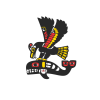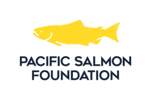Stephen Hume, Vancouver Sun, June 23, 2015
 River flows are way down on Vancouver Island, with some the lowest ever reported
River flows are way down on Vancouver Island, with some the lowest ever reported
UNION BAY — Nowhere are the extreme drought conditions affecting the east coast of Vancouver Island more evident than in little streams like Hart Creek, not far south of Courtenay.
On the heels of the driest May in the weather record and a June that’s on track for another record rainless spell, Hart Creek has already run completely dry and the three driest months are yet to come.
When I hiked up the creek bed at the weekend, I found doomed trout and salmon fry trapped in the occasional puddle where steadily rising water temperatures and exposure to predators make their survival highly unlikely. In one tiny pool I watched a snake gorging on fry with nowhere to flee.
Little Qualicum, Rosewall — at creek after creek, it was the same scenario as I drove the Island between Victoria and Campbell River.
Anglers provided similar reports. Gordon River was “showing its bones.” Ditto the San Juan. Robert Hooton, 37 years a steelhead specialist with the provincial government, told me flows on the Gold River are the lowest ever — and the previous record low was twice the present flow.
BC Hydro’s Stephen Watson told me that flows into its Comox Lake reservoir are only one-third of the previous record low.
The utility took its 24-megawatt Puntledge River facility offline June 16 to conserve water but is still spilling into the river to maintain fish habitat. Even there, the plan is to reduce flows by roughly another 30 per cent Aug. 1 should extreme drought conditions persist.
On the Campbell River, another crucial river whose coho and springs are the centre of a major recreational fishery, Watson reported low inflows into that reservoir are “extremely challenging.”
As with much of the Island, the winter snowpack normally supplying streams and recharging aquifers with meltwater during the driest months never materialized, and there’s been almost no run-off this year.
Beginning Monday, BC Hydro is reducing its water releases by 43 per cent and its John Hart generating station will be running at 20 to 25 per cent of capacity, the lowest operating level within the company’s water license.
Watson said BC Hydro is trying to conserve water so there’ll be enough to release when salmon runs arriving in a hot, possibly rainless summer will face an otherwise lethal low water barrier to spawning grounds.
And the utility is warning that there will likely be recreational impacts on its Campbell River reservoirs, a vast network of connected lakes popular for boating, expedition paddling and angling.
“This all translates to a lot more sand and rock around the shorelines, more of a walk to get to water. It will be much harder to put watercraft into the reservoir, and for those watercraft, a more exposed reservoir bottom with navigation obstacles,” Watson said.
“In June we would normally be in the middle of the freshet but essentially there’s been no snow melt into the system. BC Hydro has managed, and will continue to manage the system, as best as possible for water use interests like fish habitat and recreation.”
On the Cowichan, Canada’s first heritage river, also famed for its salmon and steelhead runs, water managers keep a nervous watch. Right now, 5.5 cubic metres per second are being spilled over the 58-year-old weir at the lake outlet.
Brian Houle, environmental manager at Catalyst Paper’s Crofton pulp mill, a major employer in the Cowichan Valley that requires about 120 million cubic metres of water a year to operate, said the company is “comfortable” with current flows and that reserves should carry through to early October.
But should the drought deepen and persist into the fall causing flows to fall to four cubic metres a second, the mill would have to shut, putting at risk more than 600 jobs in the Cowichan Valley, 5,500 jobs elsewhere in B.C. and the $20 million a year in tax revenue and $1 billion a year the mill contributes to the provincial economy. And the regional sewer system relies on river flows, so it’s at risk, too, an unpleasant prospect for householders.
A reminder that drought is not just about fish, it’s about us, too.
© Copyright (c) The Vancouver Sun
 Email
Email



